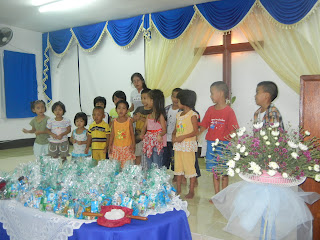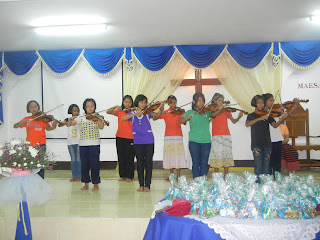HUNDREDS of people are dead or missing following flash flooding in the Magwe Region town of Pakokku on October 20 that also left thousands homeless.
The exact death toll is not yet known. Township officials put the figure at 215 on October 22 but residents, many of whom were still searching for the bodies of their missing relatives, told The Myanmar Times the death toll was likely to be almost 300.
“It is hard to say exactly how many have been killed and how many are homeless. We are now still collecting the figures, going house to house in the affected areas,” said a government official from one of four Flood Victim Care Centres established in the town.
Hardest-hit were Pakokku’s No 2 and No 3 quarters, beside Shwe Creek, a tributary of the Ayeyarwady River. In some cases whole families were killed when their homes on the bank of the creek were swept away by a wall of water.
“I lost all my family members: my wife, mother-in-law, three daughters and two sons,” said U Maung San, a 47-year-old carpenter. “About 6am [on October 20], very strong waves of water – 10 to 15 feet high – crashed through our quarter. We were swept away and couldn’t escape from the strong current. We tried to survive by holding onto the trees.
“Stronger waves then pulled out the trees and we were swept down the creek again. I escaped by holding onto one of the buildings on the bank of the creek but … even though I had escaped, I knew that my family, my house – everything I own in my life – was gone.”
He said he had been unable to sleep – “I keep seeing all those events happening before my eyes” – and was searching for members of his family, but had so far been unable to find them.
Ma Pa Pa Soe, 33, lost four sons and a daughter, while her husband survived. “We were at home together when the strong waves rushed into our house,” she said.
Deaths have also been recorded in other areas along Shwe Creek, said 63-year-old Dr Thet Lwin, who has lived in Pakokku, about 207 kilometres (128 miles) southwest of Mandalay, all his life.
“At least one or two people were killed in every village along Shwe Creek, and there are 20 or 30 villages along the creek from Myaing township to Pakokku. The most affected area is No 3 quarter in Pakokku. Hundreds of people have been killed here … many people are still missing,” he said.
One eyewitness said the level of Shwe Creek had receded significantly by midday on October 21, exposing eroded banks and piles of sand 5 metres high.
Monasteries near Shwe Creek were designated as relief camps on October 20. “I started accepting flood victims that afternoon. Now there are more than 800 people at my monastery,” said U Pyinnyawuntha, principal of Tilawkayarma Monastic Education School in Pakkoku’s No 3 quarter, said on October 21.
“I support these people with accommodation. The government and private donors from the town have also provided food, clothing, water, power supply and temporary toilets,” he said.
Magwe Region Chief Minister U Phone Maw Shwe visited flooded areas and rescue camps on October 21 and promised to arrange land, houses, and water and electricity supplies for the victims. Rehabilitation work will begin this week, an official from a relief camp at Tilawkayarma Monastery said.
Another rescue camp, at Mogok Vipassana Meditation Centre, had more than 600 flood victims on October 21. The government and Pakokku residents were providing two meals a day for victims, while the centre provided accommodation and breakfast. “Accommodation and food are the most important things for the victims at the moment. Rehabilitation tasks should follow later. We are also going to have meditation sessions to help the victims recover from the trauma,” U Sandawbatha, a senior monk at Mogok Vipassana Meditation Centre, said on October 22.
The government has opened temporary medical clinics in the rescue camps and no outbreaks of water-borne disease have been reported. “Most people suffer from normal pains, weakness of body and mind and eye problems because they have been in the water for many hours,” said a doctor at one of the clinics.
A few other monasteries near Shwe Creek were also looking after smaller numbers of affected people. A Myanmar Red Cross Society official said on October 21 that the four official relief camps were housing 1535 displaced people from 327 households, while there were six confirmed deaths and at least 58 missing in Pakokku township.
Heavy rains started on the evening of October 19, with Pauk recording 7.47 inches, Myaing 3.7 inches, Yesagyo 4.3 inches and Pakokku 4.92 inches in Pakokku.
The torrent of water destroyed Shwechaung Bridge, built in 1969, as well as many old and new buildings along its banks.
The bridge collapse has hampered road transportation to Monywa, Mandalay and most other cities, while telephone lines and electricity remained cut off on October 22. Another small bridge was also destroyed between Myaing and Pakokku and buses and other vehicles are using an alternative route further upriver.
But residents were last week questioning why the flooding was so severe, given rainfall totals were not record breaking. The likely reason, some said, was the failure of agricultural dams further up Shwe Creek.
“It is strange that so many people were killed by strong water with this amount of rain. I have seen many high rainfall records broken in my life but never a disaster like this,” said Dr Thet Lwin.
“There are several dams along Shwe Creek, starting from Myaing township to the Ayeyarwady River in Pakokku,” he said. “They should have been able to withstand heavy rain like this but I have always had my doubts about the quality of these dams. We heard they were overwhelmed by the heavy rain but no one can say for sure at this stage.”
The exact death toll is not yet known. Township officials put the figure at 215 on October 22 but residents, many of whom were still searching for the bodies of their missing relatives, told The Myanmar Times the death toll was likely to be almost 300.
“It is hard to say exactly how many have been killed and how many are homeless. We are now still collecting the figures, going house to house in the affected areas,” said a government official from one of four Flood Victim Care Centres established in the town.
Hardest-hit were Pakokku’s No 2 and No 3 quarters, beside Shwe Creek, a tributary of the Ayeyarwady River. In some cases whole families were killed when their homes on the bank of the creek were swept away by a wall of water.
“I lost all my family members: my wife, mother-in-law, three daughters and two sons,” said U Maung San, a 47-year-old carpenter. “About 6am [on October 20], very strong waves of water – 10 to 15 feet high – crashed through our quarter. We were swept away and couldn’t escape from the strong current. We tried to survive by holding onto the trees.
“Stronger waves then pulled out the trees and we were swept down the creek again. I escaped by holding onto one of the buildings on the bank of the creek but … even though I had escaped, I knew that my family, my house – everything I own in my life – was gone.”
He said he had been unable to sleep – “I keep seeing all those events happening before my eyes” – and was searching for members of his family, but had so far been unable to find them.
Ma Pa Pa Soe, 33, lost four sons and a daughter, while her husband survived. “We were at home together when the strong waves rushed into our house,” she said.
Deaths have also been recorded in other areas along Shwe Creek, said 63-year-old Dr Thet Lwin, who has lived in Pakokku, about 207 kilometres (128 miles) southwest of Mandalay, all his life.
“At least one or two people were killed in every village along Shwe Creek, and there are 20 or 30 villages along the creek from Myaing township to Pakokku. The most affected area is No 3 quarter in Pakokku. Hundreds of people have been killed here … many people are still missing,” he said.
One eyewitness said the level of Shwe Creek had receded significantly by midday on October 21, exposing eroded banks and piles of sand 5 metres high.
Monasteries near Shwe Creek were designated as relief camps on October 20. “I started accepting flood victims that afternoon. Now there are more than 800 people at my monastery,” said U Pyinnyawuntha, principal of Tilawkayarma Monastic Education School in Pakkoku’s No 3 quarter, said on October 21.
“I support these people with accommodation. The government and private donors from the town have also provided food, clothing, water, power supply and temporary toilets,” he said.
Magwe Region Chief Minister U Phone Maw Shwe visited flooded areas and rescue camps on October 21 and promised to arrange land, houses, and water and electricity supplies for the victims. Rehabilitation work will begin this week, an official from a relief camp at Tilawkayarma Monastery said.
Another rescue camp, at Mogok Vipassana Meditation Centre, had more than 600 flood victims on October 21. The government and Pakokku residents were providing two meals a day for victims, while the centre provided accommodation and breakfast. “Accommodation and food are the most important things for the victims at the moment. Rehabilitation tasks should follow later. We are also going to have meditation sessions to help the victims recover from the trauma,” U Sandawbatha, a senior monk at Mogok Vipassana Meditation Centre, said on October 22.
The government has opened temporary medical clinics in the rescue camps and no outbreaks of water-borne disease have been reported. “Most people suffer from normal pains, weakness of body and mind and eye problems because they have been in the water for many hours,” said a doctor at one of the clinics.
A few other monasteries near Shwe Creek were also looking after smaller numbers of affected people. A Myanmar Red Cross Society official said on October 21 that the four official relief camps were housing 1535 displaced people from 327 households, while there were six confirmed deaths and at least 58 missing in Pakokku township.
Heavy rains started on the evening of October 19, with Pauk recording 7.47 inches, Myaing 3.7 inches, Yesagyo 4.3 inches and Pakokku 4.92 inches in Pakokku.
The torrent of water destroyed Shwechaung Bridge, built in 1969, as well as many old and new buildings along its banks.
The bridge collapse has hampered road transportation to Monywa, Mandalay and most other cities, while telephone lines and electricity remained cut off on October 22. Another small bridge was also destroyed between Myaing and Pakokku and buses and other vehicles are using an alternative route further upriver.
But residents were last week questioning why the flooding was so severe, given rainfall totals were not record breaking. The likely reason, some said, was the failure of agricultural dams further up Shwe Creek.
“It is strange that so many people were killed by strong water with this amount of rain. I have seen many high rainfall records broken in my life but never a disaster like this,” said Dr Thet Lwin.
“There are several dams along Shwe Creek, starting from Myaing township to the Ayeyarwady River in Pakokku,” he said. “They should have been able to withstand heavy rain like this but I have always had my doubts about the quality of these dams. We heard they were overwhelmed by the heavy rain but no one can say for sure at this stage.”








